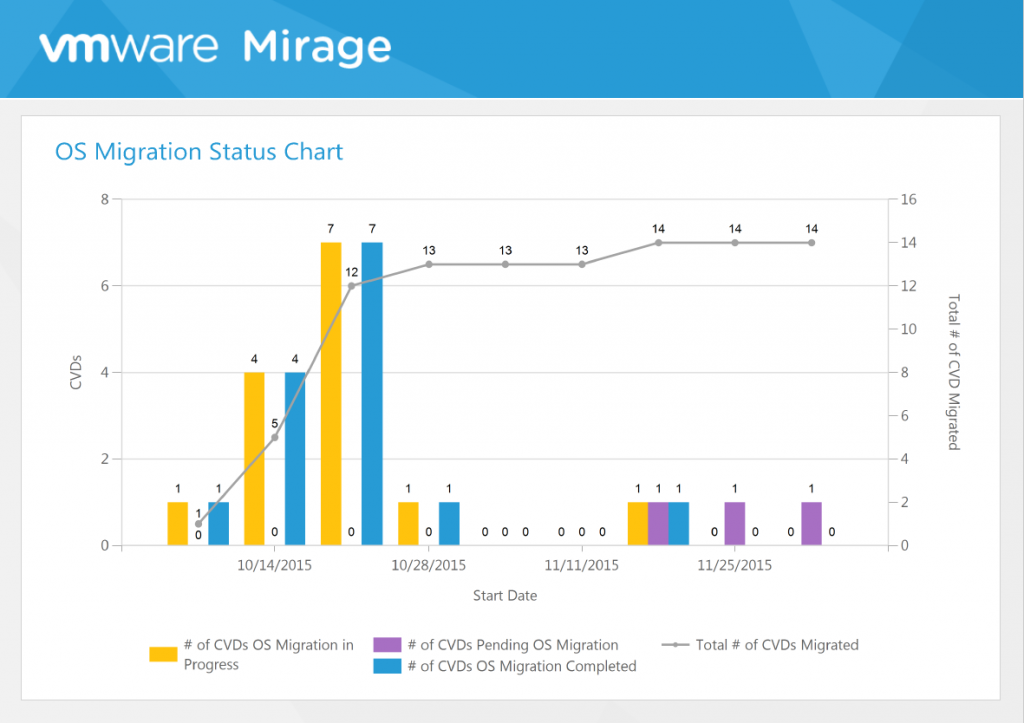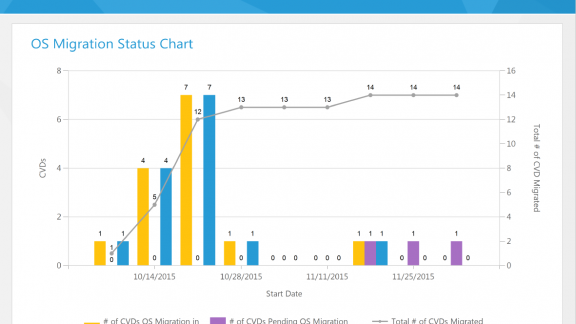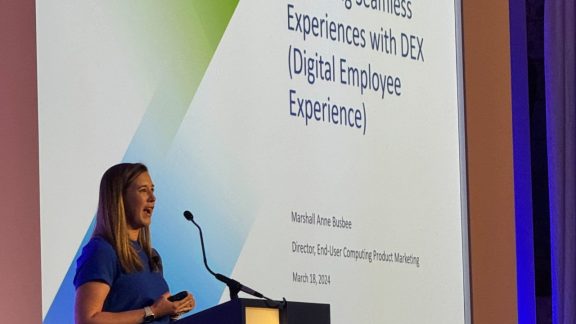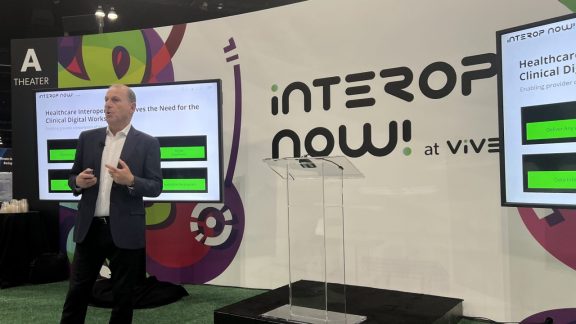Microsoft’s Windows 10 release this past July represented a fundamental shift in how organizations manage endpoints. Managing Windows systems from the classic endpoint management model shifted to an Enterprise Mobile Management (EMM) model. Microsoft opened up the PC platform to be managed like any other other mobile device (such as smartphones and tablets). Customers needed to start thinking of a new approach to managing future Windows 10 desktops. But before customers can even get to a full EMM approach, they need to be able to migrate their existing Windows 7 environment to a Windows 10 environment.
As the year progressed, more of our customers began looking at this use case. Today, I’m excited to announce that we are helping our customers with their journey to Windows 10 with full operating system (OS) migration support using VMware Mirage 5.6!
[Related: How VMware EUC Solutions Help with Windows 10 Desktop Migrations]
Last year, Microsoft ended support for Windows XP. We helped many customers successfully migrate from Windows XP to Windows 7 or Windows 8.1 to remain compliant. The benefits Mirage brought to those customers are the same benefits customers can realize when using Mirage 5.6 to migrate their Windows 7 desktops to Windows 10.
- Mass migration: Customers can automate migration to Windows 10 to the tune of dozens or even hundreds of OS migrations a day. This helps accelerate the time it generally takes over a manual migration process or using tools that only migrate user data and settings.
- Safety net: Using customized upload policies, IT can upload all, zero or some files from the existing Windows 7 endpoint they are migrating. Mirage takes a snapshot of the endpoint before migration begins in case anything malicious happens during the migration to Windows 10. If files are missing, apps don’t work, etc., simply revert back to the state of the endpoint before migration began.
- Designed for distributed environments: The migration to Windows 10 can be difficult for customers with distributed branch and/or remote offices. Mirage makes this easy with branch reflector technology. Branch reflectors are assigned at each remote site and act as distribution points. Instead of pushing the same image down to 10 devices at a remote site across the WAN, IT can push one image to one branch reflector at the remote site. The branch reflector takes care of distributing the image to other desktops at the remote site, saving time and network costs. And branch reflectors don’t have to be dedicated machines, either. IT can limit the network bandwidth that Mirage consumes for specific branches. Doing this by time of day can help offload image delivery to off-peak hours.
- Minimize user downtime: End users continue working while Mirage downloads the Windows 10 image in the background. Once the image is downloaded, IT can trigger the OS migration at a later stage. Mirage also reports information on installed applications, which enables IT to assign application layers to end users so they can continue to work with their existing applications once they are migrated to Windows 10.
- Complete visibility into the migration process: Mirage includes out-of-the-box graphical reports that reflect the actual progress of the OS migration project across the organization.

- Integrate with existing tools: Mirage offers public API and PowerShell cmdlets that enable flexible and easy integration with your existing PCLM or helpdesk management tools.
If you are looking for a smooth transition to Windows 10, I encourage you to download Mirage 5.6 or start a free trial. Combine Mirage with other tools, such as VMware User Environment Manager, for an even more complete migration path.
To get a full view of what else is in Mirage 5.6, please refer to the release notes. For more information on Mirage and Windows 10, please join the conversation on Facebook, Twitter and in our Communities. Until next time!
By Sachin Sharma, Product Marketing, End-User Computing, VMware








